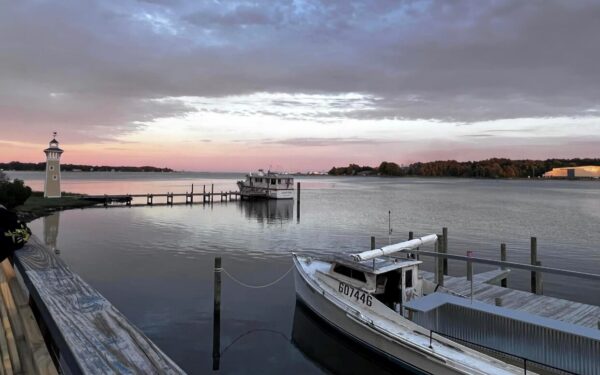The Boater’s Dictionary: A Guide to All Things Boats
The world of boating is a very exciting one to dive into, especially if you’re looking to test the waters with a rental boat before you decide what type of vessel is going to work best for your situation!

But before you pack your sunscreen and captain’s hat, there is some very important boating terminology that you should be familiar with. Let us help you — here are some common terms and phrases to know before you find yourself at the helm!
Parts of the Watercraft to Know
Before you head out for a day on the water, it’s important to be able to identify the main components of your boat and understand their individual purposes. Here are a few general terms to familiarize yourself with — but don’t be afraid to ask your boat rental team questions once you arrive and see your vessel for the first time:
Hull
The main body of the boat, including the side, bottom, and deck. It does not include the masts, superstructure, rigging, engines, or other fittings. Topsides refers to the portion of the hull that is above the waterline.
Bow
The front of the boat. Also referred to as “forward.”
Stern
The rear of the boat. Also referred to as the afterdeck or the aft.
Helm
The part of the boat where you steer the vessel — the tiller or wheel used for steering and directional changes. Also referred to as the cockpit or center console area, depending on the type of boat.
Cabin
The enclosed and protected area on a boat, which can range from a small cabin to a large living space with multiple rooms.
Casting Platform
The raised, open deck area of a fishing boat, used for casting off.
Console
The raised area above the deck or cockpit where passengers can sit or stand while the boat is in motion.
Berth
The sleeping area on a boat, or can be used to refer to as a place where the boat is tied up.
Deck
Any exposed, flat exterior surface of the vessel that passengers stand on. The foredeck is the most forward part of the deck.
Head
The term for the bathroom aboard the vessel.
Swim Platform
The part of the stern that was designed to make it easier to get in and out of the water on certain types of boats.
Bilge
This is the lowest section of the boat, and the area where water will often collect. That’s why a bilge pump is essential, as it helps to forcibly remove that excess water.
Scuppers
Deck drains that channel any water that gets into the boat.
Inboard or Outboard Engine
An inboard engine is mounted inside the hull of the boat, while an outboard engine is mounted on the transom.
Transom
This is the vertical reinforcement piece that is used to strengthen the stern of the boat and is above the water line. It is where an outboard engine would be mounted.
Propeller
The rotating device that works with the engine to move the boat forward and backwards through the water.
Rudder
The moving backend appendage that controls the steering of the boat.
Coaming
Raised sides or edges on a boat, to keep waves from coming into a specific area, such as the cockpit.
Hatch
The door or cover of a boat that closes off the cabin from the rest of the boat.
Lines
Rope of any kind aboard the watercraft, which is typically used for tying up at a dock (bow line) or sailing purposes. Lifelines are those cables or lines that prevent people or gear from falling overboard.
Fenders or Bumpers
These rubber floating devices are designed to protect a boat’s hull from damage when tied to a dock or another vessel.
Cleat
This is the device, typically secured to a dock, which allows you to secure your boat in one place via a rope.
Navigational Lights
Sometimes referred to as “running lights,” these are important to have on at night so other boats can see you in the dark. The port side is red, and the one on the starboard side is green, to help show other boaters what direction you’re facing and who has right of way.
VHF Radio
A marine “Very High Frequency” or VHF radio is the primary means of communication out on coastal waters and allows you to instantly communicate with other boaters, marinas, bridges, and the United States Coast Guard in case of emergency.
Personal Flotation Device (PFD)
A personal floatation device or PFD is a life jacket or something similar that helps you to float in the water in case of emergency.
